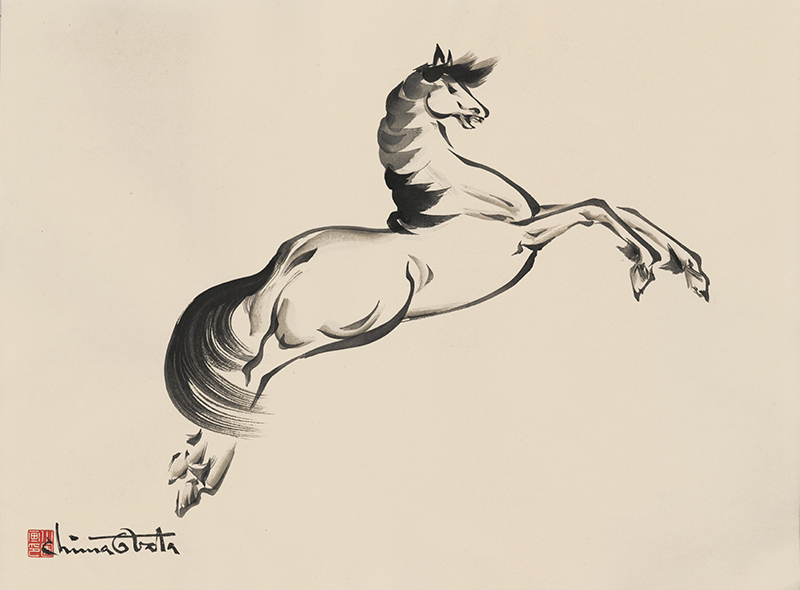
19th, 20th & 21st Century Fine Prints
707-546-7352 · fax 707-546-7924 · web: www.annexgalleries.com · email: artannex@aol.com
(Flying Horse) by Chiura Obata

(Flying Horse)
Chiura Obata
(Flying Horse)
Chiura Obata
1885 - 1975 (biography)Chiura Obata's mastery of the Sumi-e brush, and his ability to convey so much with so little, is on full display in this woodcut. Distilled into the briefest of essential lines, with no mistakes, we see how Obata viewed his ever-moving subject, capturing peaceful moments as quickly as they present themselves. At first glance, Chiura Obata's image of a rearing horse appears to be a sumi ink drawing, with the telltale gradations of black to light gray and the soft, tapering lines of a calligraphy brush. But the genius of this work is that it is a woodcut, and that Obata - through collaboration with trusted printmakers - achieved such painterly elegance through a mostly unforgiving medium. Obata was instrumental in bringing the monumental skill of Japanese ukiyo-e printmakers to the modern American art scene in the 1930s, by combining his sumi ink paintings and the color woodcut medium.
Chiura Obata was born in 1885 in Okayama prefecture, Japan. At the age of 14, he went to Tokyo where he studied with Tanryo Murata, Kogyo Terasaki, and Goho Hashimoto. In 1903 he moved to San Francisco. While working as an illustrator for the city's Japanese newspapers "The New World" and the "Japanese American", Obata made on-site sketches of the San Francisco earthquake. He married Haruki Kohashi in 1912, and from 1915 to 1927 worked as an illustrator for Japan Magazine. He spent much of the 1920s painting landscapes throughout California and helped establish the Eastwest Art Society in San Francisco in 1921. Spent the summer of 1927 on a sketching tour of Yosemite and the Sierra high country producing over 100 new paintings. In 1928 Obata returned to Japan, following his father's death. While there, he supervised the production of 35 colored woodblock prints of California landscapes for his World Landscape Series. They were exhibited at the "Eighty-Seventh Annual Exhibition" at Ueno Park, Tokyo; "Lake Basin in the High Sierra" won first prize.
In 1932 Obata was appointed as an instructor in the Art Department at the University of California, Berkeley. Between 1930 and 1941, one-man exhibitions were held in numerous locations. In April 1942, Obata was interned at the Tanforan detention center where, during his stay, he organized an art school with over 650 camp residents as students. In September 1942, he was moved to the Topaz Relocation Center, Topaz, Utah. Released from Topaz in 1943, he moved with his family to St. Louis, finding employment with a commercial art company.
In 1945, when the military exclusion ban was lifted, Obata was reinstated as an instructor at U.C. Berkeley. He was promoted to Associate Professor of Art in 1948. One-Man shows continued, as did his sketching and painting trips in the high country, often with the Sierra Club. In 1954 he became a naturalized citizen and retired as Professor Emeritus from U.C. Berkeley. From 1955 to 1970 he traveled throughout California giving lectures and demonstrations on Japanese brush painting. In 1965 he received the Order of the Sacred Treasure, 5th Class, Emperor's Award, for promoting goodwill and cultural understanding between the United States and Japan.
